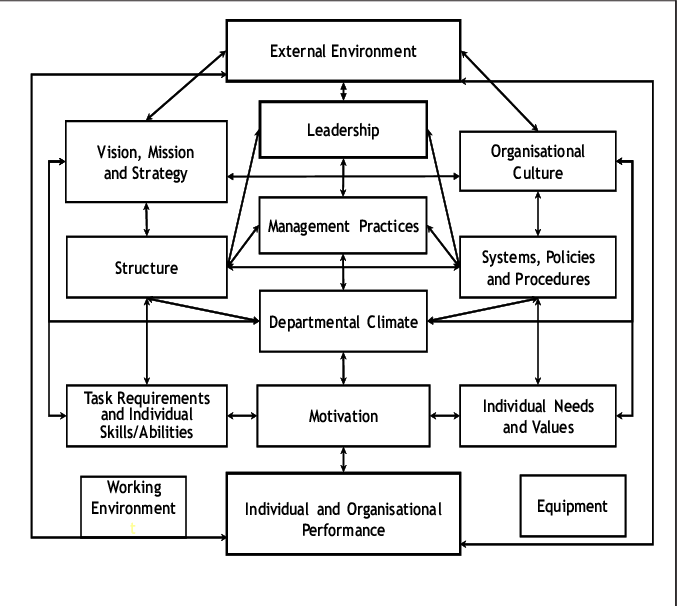What is the Burke-Litwin Model?
The Causal Model of Organizational Performance and Change, also known as the Burke-Litwin Model, identifies and interrelates factors that affecting how organizations deal with chaos. The model argues that there are certain consistent causal linkages among these classes of events.

Steps in the Model by Burke and Litwin?
Burke and Litwin distinguish between transformational factors (yellow boxes) and transactional factors (green boxes).
- Transformational change happens in response to the external environment, which directly affects the mission, strategy, culture, and leadership of the organization.
- In turn, the transactional factors are affected include the structure, systems, management practices, and work climate.
- These transformational and transactional factors together affect motivation and thus performance.
- There is a feedback loop: the organizational performance can directly effect the external environment.
